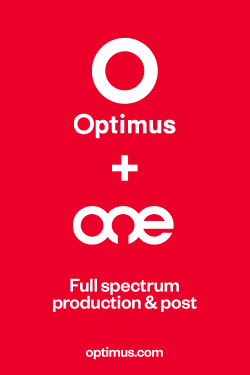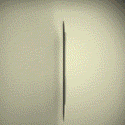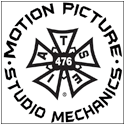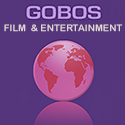
20th Century Studios’ highly acclaimed action-thriller Prey is the No. 1 premiere on Hulu to date, including all film and TV series debuts. Additionally, Prey is the most watched film premiere on Star+ in Latin America and Disney+ under the Star-Banner in all other territories, based on hours watched in the first three days of its release.
The newest entry in the Predator franchise, Prey is set in the Comanche Nation 300 years ago. It tells the story of a young woman named Naru (Amber Midthunder), a fierce and highly skilled warrior who has been raised in the shadow of some of the most legendary hunters who roam the Great Plains. So, when danger threatens her camp, she sets out to protect her people.
The prey she stalks, and ultimately confronts, turns out to be a highly evolved alien predator with a technically advanced arsenal, resulting in a vicious and terrifying showdown between the two adversaries.
Director Dan Trachtenberg who scored a cult classic with 10 Cloverfield Lane in 2016, is now two for two with the release of Prey. Aside from the original take on a iconic monster and Midthunder’s badass portrayal of Naru, one of the other reasons the film is so delicious comes from its frenetic editing during action sequences.
That can be attributed to editors Angela M. Catanzaro and Claudia Castello.
Claudia was born in Brazil and started her career as an editor doing documentaries. Her passion for storytelling brought her to the US where she went to flm school at USC and met director Ryan Coogler. After earning her M.F.A. in Film Production at the University of Southern California in 2011, Claudia’s career took off.
After her work on the acclaimed Black Panther, Claudia worked with Batman Begins and Man of Steel scribe David Goyer on Foundation on Apple+ TV, and filmmaker Fernando Grostein Andrade on Abe.
Claudia’s other feature film credits include Fruitvale Station and Creed, Roxanne, Roxanne, The Last Full Measure, The Funeral Guest, Breaking Through, Breaking Brooklyn, Adopt a Highway and Sergio.
Reel 360 News had an opportunity to talk craft and Prey with Claudia.
What’s your origin story?
I was born in Rio de Janeiro, Brazil where I grew up. My siblings and I spent all our free time at the beach while my mom worked long hours. All that time at the beach made me a good bodyboarder (a type of surfing). I started competing at 14 when I began traveling along the Brazilian coast. Then I turned pro and competed on the World Tour.
Because of that, FACHA (Faculdades Integradas Helio Alonso), a well-known University in Rio, became my sponsor. This is where I received my undergrad degree in Journalism.

When I graduated, the initial salary for journalists in Brazil was unrealistic for the cost of living, so I came to the U.S. to learn English. I ended up taking some broadcast and film classes at different community colleges and started working at Film Planet, a boutique commercial production company in Venice where I learned Final Cut.
How did you become an editor?
Working at Film Planet, I started putting together the in-house directors’ reels and became interested in learning more about editing and Final Cut by myself.
A good friend of mine who is now the founder and director of the Brazilian Hollywood Film Festival, Talize Sayegh asked if I knew a Portuguese-speaking filmmaker to edit her first short movie.
I said I could be that editor, even though I had no clue of how to put a scene together. But I was so lucky that the director Allan Fiterman, now a director at Globo TV in Brazil, became my friend and had all the patience in the world to walk me through that process.
That’s when I discovered I really liked editing. Allan was a professor at NYFA (New York Film Academy) in LA and was able to help me receive an editing program scholarship. After I finished the intensive course, I needed more. I realized that to be a good editor, I had to understand the whole process of filmmaking.
That’s when I applied for my MFI in film production at USC. It was a dream come true! There, I had the opportunity to meet amazing professors and colleagues. During my second year, Ryan Coogler was the student who caught my attention the most.
So I approached him, he liked my work and we started collaborating on our first Short Fig, which did really well on the festival circuit. Then we did Fruitvale Station, then Creed and then Black Panther.
Who were your mentors?
My sensational mom was the first one and still is. Then Miguel Falabella, a veteran Brazilian writer/director/actor who told me I could write and I believed him. My professors at FACHA taught me how to think critically, especially Aristides Alonso, who wrote several books about psychoanalysis and mind technology and became a long-time friend.
Writer/director Matthew Kohnen was a key mentor in becoming a filmmaker. The USC professors helped shape my self-confidence, which I needed as a Latín woman who speaks broken English in Hollywood. Brenda Goodman gave me a lot of support in that process.
Robert “Bob” C Jones taught me how to edit in a genuine and emotional way. I still hear his voice in my head. Avid professors Reine-Claire, Kathryn Amend, Mark Jonathan Harris and Bruce Block were some of the important influences in my build-up as a filmmaker.
What drives you to create?
As a journalist and growing up immersed in a social, cultural, and economically diverse environment, I’m always interested in subjects that need transformation. Art is a powerful tool to open up conversations. In such a polarized world, we need art to be able to communicate in a more universal and primary way.
What is your editing process?
I feel first, think second, and explain later.
What’s it like working with Ryan Coogler?
We had a very safe and friendly space to create and try any crazy idea. Ryan is an extraordinary human being and a very special artist.
When you assembled Black Panther what was his reaction?
He was always very collaborative, supportive, critical and passionate.
REELated:
Do you have a favorite sequence that you cut?
I’m very happy about the fight scenes and training montages in Creed. I still cry when I watch the ending sequence in Fruitvale Station. I love the loving sequences in Sergio.
The M’baku “comedy” in Black Panther, the “birthday party” in Abe, the “Salvor and Hugo’s last sequence” of Foundation episode 3, and the “Shanté drug dealing” montage in Roxanne Roxanne. It’s hard to pick only one.
Anything you left on the cutting room floor and weep about?
Yes, there were movies I watched on the big screen months after locking picture and I realized things I could have done better. But that’s a never-ending feeling.
Most of the filmmakers I’ve worked with are a little or a lot obsessed with doing their best, so when a project is finally done because we ran out of time or/and money, I try to be happy, proud of my work and learn with the mistakes.
Let’s talk about Prey. This is kind of an origin story for the Predator franchise?
It’s a prequel set on an Indigenous nation settlement in 1719. The main character is a young female Comanche, who faces the challenges of establishing herself as a hunter, a nontraditional role in her society. No one takes her seriously, as good as she is, and she fails early on. But when the Predator shows up, she has to join the others in fighting this major threat to them all, and prove her worth as a hunter.
What was it like working with Dan Trachtenberg?
It was great! After production, Dan was in the editing room for most of the time – always very passionate, hands-on and at the same time welcoming collaboration.
Working on Prey as a brown woman did you feel any kind of responsibility in how you would portray Naru?
Absolutely. I saw myself in Naru. She is a go-getter in a culture that doesn’t believe you can become a great “fighter” just because you are a woman. I know I am very lucky to have been living through generations that have slowly been educating and transforming this scenario in every area including family relations, community, work and play. As Naru showed her power, I came with all my stamina and gadgets to show mine too as an editor. Lol
You have worked on three game-changing films – Black Panther, Creed and now, Prey. How does that make you feel as an editor? As a brown person in the industry? As a woman?
I love that I’m occupying a space that didn’t exist before for a brown Brazilian Latin woman in the industry. And having had the opportunity to work on three big game-changing projects has helped me to be respected and to have a voice in the industry. I am very thankful for that.
The audience is tired of seeing the same stories told by the same demographic. We all want new genuine voices and different points of view. It’s unbelievable when you have 10 white rich men in the room talking about how a black woman should feel and you don’t even hear a female opinion. Or you do, but just for protocol. I’ve seen things like this happen too many times.
But thankfully this has been changing and it has to keep changing a lot more. We have to occupy those spaces and be those voices. There’s a lot of talent out there that needs to be brought in. And this is happening. A lot of content is being made and there are many opportunities for us to keep growing as a better and more equal industry.
Who would win in a fight? Black Panther, Creed or Predator?
It depends on which one is going to be the best strategist. It’d be a tough fight though. Lol.
You’re also a director. How do you approach directing as opposed to editing?
A director has to deal with a lot of things happening at once, especially while filming. So, it’s juggling a lot of elements while having to be very present for the actors to help bring out their best performances. Editing is a bit more of a focused effort in a more controlled environment, but at the same time what can be created in the editing room is mind-blowing. I often say editing is like sculpting.
What’s next?
I’ve just started editing the Hulu series by Kapital Entertainment studio Black Cake with EP Oprah Winfrey. It’s being my first opportunity to work on a real female point-of-view-oriented project from writing, directing, producing, and acting to editing. It’s a beautiful story and I’m very excited about it.
Prey is currently streaming on Hulu.
Follow us on our new Facebook page!

Colin Costello is the West Coast Editor of Reel 360. Contact him at colin@reel360.com or follow him on Twitter at @colinthewriter1










